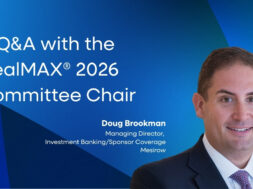Tackling Workforce Reduction Strategies
During weakening economic conditions, employers might be thinking about reducing staff. We explore best practices.

As organizations follow the roller coaster imposed by market conditions and the economy, tough decisions related to human capital costs and staffing levels must be made and communicated.
Business leaders have challenging decisions ahead, based on questions that include:
1. Who stays and who goes?
2. What are the best practices for protecting the organization from litigation?
This section of the report originally appeared in the Middle Market Executive Summer 2023 edition.
Illustration by Gary Waters
3. What are the most effective communication and execution strategies?
4. How do we retain and engage the remaining staff while increasing their workload?
Who Stays and Who Goes?
No one sets out to make bad decisions. But fast decisions later scrutinized by a federal or state agency can look circumspect under cold, stark lights. There must be an objective and well-documented process followed to reach the right decisions. First, look at departments and work teams as groups. Within those groups, follow this hierarchy of selection to identify the headcount to eliminate:
• POSITION—Can the role be eliminated? If certain functions are going away, a company may be able to eliminate the position completely. Be thoughtful in selecting the roles that can be eliminated. Now is not the time to change roles to select specific individuals for layoffs.
• PERFORMANCE—If multiple people inhabit the same role or job title, use objective performance measures as the deciding factor. This is not about a supervisor’s opinion; clear metrics or robust performance reviews should be used to guide the decisions. It’s important to create a matrix of the specific performance criteria for each role, then evaluate each employee against the criteria. The matrix could become critical in the event of charges from the Equal Employment Opportunity Commission.
• TENURE—If you are not in a union environment, using length of service is usually the last objective measure to employ. This strategy may find organizations eliminating their strongest workers.
Protecting the Organization
Prior to finalizing the list of those who will be terminated, compare the current EEOC statistics to the statistics after the reduction in force. This is to identify possible discriminatory patterns. Avoiding this step could put the firm at significant risk in the event of EEOC charges.
Where allowable by law, employers should review the option of obtaining signed separation agreements from terminated employees in consideration for their severance package. It’s important to work with an attorney to ensure the employees over age 40 are provided a separation agreement that addresses age discrimination.
Communication and Execution
During the process of finalizing the list of impacted employees, organizations should take great care to maintain confidentiality. Some leadership teams struggle with keeping secrets. The list of names of those employees targeted for termination frequently changes during the process. Leaks about the upcoming staff reductions can become very problematic.
We’ve all heard about the “creative ways” some companies have communicated their downsizings. Some organizations have conducted group terminations in a conference room or, worse yet, on a Zoom call with large groups of people. These approaches tarnish the organization’s public image, break trust with their remaining staff and treat exiting employees as if they are no longer valuable.
Related content: Recruiting and Retaining Talent in a Post-COVID World
In preparing to notify employees, it is best to create a script of talking points for the manager. The script should include a statement about why the organization is making staff changes. It should provide guidance for the manager and include information about separation agreements, severance, unemployment insurance and employee benefits. Managers should be reminded to avoid conversations about why and how certain employees were selected for termination.
The notification to the affected employee should take less than five minutes. It should be delivered in a respectful and professional manner. Most employees are stunned during the notification and won’t remember any of the specifics discussed. Providing them with a letter outlining the termination details is recommended.
After the employee has been notified, tell them to go home. If appropriate, let them come back and wrap things up for their clients and colleagues if they’d like. Give them dignity and space to finish well. Let them say goodbyes if they’d like. All employees will notice the dignified way these impacted employees are treated.
Finally, organizations should consider offering outplacement services to terminated employees. These services help with writing resumes, preparing for interviews, networking and other tactics necessary to land their next job. These services can reduce unemployment costs, lower the risk of negative legal action and demonstrate concern for the terminated employees. Additionally, the remaining employees will be watching carefully to see how the firm is handling the terminations.
Retaining and Engaging Remaining Employees
Immediately after the terminated employees have been notified, leaders should meet with their remaining staff. A script should be created to guide those leaders. The script should include a brief explanation of the workforce reduction with an acknowledgment related to the human impact. Leaders should briefly address the increase in workload for the remaining employees and expectations for the organization’s future. Staff reductions can result in decreased loyalty and productivity. It is important to encourage employees to discuss their concerns with their leaders directly and remind them of the open-door policy. There is risk of unwanted turnover if this step is missed.
As uncertainty looms in the marketplace and reductions in staff are required, organizations can work to make the process smoother and less painful by handling it with skill and care.
Elaine Hugar and the DPG Management team deliver custom-tailored HR and executive search solutions to help clients achieve results through people.

Middle Market Growth is produced by the Association for Corporate Growth. To learn more about the organization and how to become a member, visit www.acg.org.


